|
We can be so good at networking in our personal lives. The term “networking,” often implies how businesses work with each other to bring in clients, and the internet is a type of network. However, networking can apply to so many different situations, and many of us do it daily using verbal and body language. Each of us knows somebody who knows somebody else who knows something that we don’t know. In a way, we are like a human web of interconnectedness, and the more of it we have, especially with regard to positive emotional support and useful life-enhancing information, the more content we can feel. Nature is full of networks, and some are underground, where we rarely look. Through Salma Arastu's art we can learn much from the way these networks function and consider how to follow their fine example in our own relationships. Her beautiful artwork is available in print form in any size at affordable prices with framing available to you through Sustaining Arts Gallery. The original version of the art shown below this first image will be available after August 30 2024. Mycelium is a dense network of thread-like structures (hyphae) that grow underground, spreading out to absorb nutrients from the environment, which support the growth and development of fungi, some of which are mushrooms. This network is essential for decomposing organic matter and recycling nutrients back into the soil. This process is vital for soil health and the growth of plants. Mycelium also form symbiotic relationships with plant roots, known as mycorrhizae, enhancing nutrient uptake for plants. They break down environmental pollutants, cleaning up contaminated soils and water and produce powerful enzymes that can break down complex organic pollutants like petroleum products, pesticides, and dyes by breaking the chemical bonds in these compounds. In her new series of mixed media paintings, Soil and Soul, Salma Arastu examines and expresses the deep interconnectedness of human and natural life by juxtaposing the fungal mycelial patterns found in nature with Arabic calligraphy. In Salma’s words: “ This new series mirrors contemporary ecological and social issues with artistic investigations based on science, spirituality, and the humanities. As forest psychology has developed, we increasingly see that it is the fungi that coordinate forests and ecosystems, acting as connective tissue between all beings. Like an underground highway system, mycelium carries nutrients – nitrogen, carbon, and phosphorus-between plant roots, nurturing the collective growth of its community. It’s contributions don’t stop there: plants with fungal allies are proven to be more resilient when it comes to infestation and disease, and mycelium has even been shown to transmit messages between plants through a language of chemical signals. The invisible network of mushroom mycelium found in nature is a dynamic rooted network that works to build and sustain vast, reciprocal interconnections. On a human level, these connections, speak to us of the nourishment and growth possible in our organizations, communities, and social movements.” Hold Me Together- V 60 x 30 on handmade paper In Salma’s Hold Me Together, I view the delicate strands of mycelium weaving their way, almost invisibly, connecting like a river to the life below. When I was a young adult, I learned that too much “alone time” was not good for me. I needed connection with others during some part of the day to gain some perspective on my own life and to get clarity on my motives and my needs. As much as I enjoy alone time where I look earnestly into my own life, I often need to bounce my ideas and feelings off of others who come from another viewpoint. These wonderful friends and family are the mycelium that help hold me together. And as much as I rely on my friends and family, I also aim to be the tiny thread that helps to sew up any threadbare areas in their lives. If only I can be sensitive enough to notice the small things, listen more, accept them more and more for where they love to be and encourage their positive life decisions. The Story of the Mycelium shows how mycelium interact with plants. They live deep underground and do most of their networking there. They are a foundation for the plants above, continually giving nutrients so that those above can thrive. I liken this relationship to many finding their own foundation - a love of nature, connection to higher consciousness, nurturing body and mind, and developing a rooted quality in family, whether through bloodline, adoption or choice. There are key areas that make my day great. One of them is enough sleep, which can knock my day off course if it doesn't happen. Eating well and exercising is a great foundation, as well as connecting somehow with nature - love being in the garden every morning. Sharing some of my nature and creative art and music findings with others I care about adds to my own enjoyment. Salma's Reaching Out V reminds me that I cannot help the world to become a better place on my own. When I reach out to others who have more knowledge in any given area, I use my own gifts to add benefit as I enjoy learning how I can best fit in to help achieve good results for all life. Our ecosystem is in great need, reaching out to us as humans all the time, asking us to listen. What does nature have to teach us? How can we reach out to her? How do we give back to Mother Earth all that she has given us? MYCELiUM teach us the value of reaching out to our beloved earth to ask for help and reaching out to others around us for support and aid. For instance, I would like to write postcards to persuade swing voters in our upcoming election, yet it is so much more fun to write them with others than alone, so I will get together with a group soon and we will encourage each other to write more and more. The word “symbiotic” is a symbol for teaching human beings how to connect with each other and with our biodiverse world. In Salma’s Symbiotic Relationships an intricate network of relationships has formed. We are dependent on the earth for our survival, and on the biodiversity that helps support us. This symbiotic relationship is much more important than the new plastic toy that we buy at the store. The more mindful we are about what we purchase, the closer our relationship becomes to the greater mother who sustains us, Pachamama, Mother Earth. Many of us are now starting to listen to other species and hearing their cries for help. As we listen and we watch, it is important to see how much power we have to change our relationship to life and human-made things, enjoying them for their beauty and utility, and yet always keeping in mind if we are exploiting other people, animals, insects or Mother Earth herself in order to get something for ourselves. We have the power to have control over many of the species, plants and fauna, that are around us, though, Mother Earth is letting us know with her extreme weather that we only have control to a certain point. She is crying for us to listen. As we do, she will treat us with more respect and help us to live in harmony with the earth. Taking Action What can we do in terms of changing our ways to connect well with others and spread positive ideas so to help ourselves and our planet? I invite you to ask yourself the following questions:
What connections can I make with others to bring more joy into my life? In what way can I listen better to Mother Earth and the flora and fauna around me? What emotional and physical nutrients can I carry to others to improve their day? What habit can I change to show my understanding of how plastic pollutes the earth? Which natural products can I use that will absorb back into the earth, adding benefits? What action can I take with other people to help change the world for the better?
0 Comments
Enjoy Spring in Usha Shukla's Art Spring is my favorite season! I love the freshness, the aromatic scents, and the feeling of hope in the air as the veil of darkness lifts. Our world is a place of such rich beauty, so abundant in many ways. Spring is one of those seasons that asks us to look at things anew in our own lives. Usha Shukla’s Art does just that, particularly her paintings that suggest Spring and moving forward with new ideas, wiping the old slate clean in order to start again using a fresh approach. In her oil painting “Not Quite Summer," Usha Shukla portrays the warm lazy days of late Spring when you can still see colorful flowers all around, reminding viewers to slow down and cherish their friendships. Flowers help me think of gentle approaches and open heartedness. Let’s face it, I’m not always gentle, and I try to be openhearted, but sometimes I think more of myself than others. There is a fine line between taking care of myself and being there for someone else, and I do notice that sometimes I miss the mark and think a little too much about myself. I wish that as a young person I had been instructed in school or by family how to communicate better. I guess life is a class in itself, especially when I’m able to look back to see how I have changed through the years. You see, many years ago my sister approached me and said, “Julie, sometimes you act so abruptly. It just doesn’t feel good when you say goodbye on the phone.” I really felt the sting of her words, but after thinking about it, I realized I could do something about it. I find it very challenging to say in a nice way, “I have to go”, “I’m not interested” or “ I don’t agree with you.” My first impulse is to be insensitive and say jarringly, “I can’t talk, bye”, “I’m not into that” or “you’re full of BS. “ As we know, often, those strategies don’t work.😳🤪 Usha inspires us to use positive energy with ourselves and others. The playfulness and energy of her "Picnic in the Park" resonates with a spirit of togetherness, inspiring a sense of joy and shared experiences. This four panel painting invites viewers to create connections that are reminders of the warmth of springtime gatherings. Befriending the Phone I have different strategies for saying goodbye on a phone, based on who I’m talking to. Do you have friends who really have a hard time getting off the phone? Do they continue the conversation even after you say you need to go? When I am aware of certain people who don’t want to get off the phone, I always leave an extra 2 to 5 minutes to say goodbye. If I add that time in then all I have to say is “Just want to let you know I need to go in a few minutes.“ My dear friend wants to talk further and say goodbye very gradually, so she then asks many more questions and then I say I need to go again. By then, she is starting to realize that I need to leave so when I finally tell her I have to go a third time, she accepts it. Now, let’s say I have to leave quickly. That is a different matter entirely. I love using the “sandwich” approach. Basically what I do is take the word “no”, something that translates as not very tasty, and place it between “2 yeses” which may seem more delicious, like two pieces of freshly baked bread. If I can remember to fit it in, I will say something like the following YES-NO -YES sandwich: YES - I wish I could talk more with you now. NO- Too bad I have to go. YES - Can I call you later and finish up this conversation with you? Let’s face it, as much as we love our family and friends, we don’t really want to go to every event they ask us to go to. Sometimes I have come right out and said, " thank you so much for the invitation but it’s just not really my thing." I can do that with people who could be more understanding and open to the fact that we all have different tastes. Then, there’s another approach. Let’s say there are two events happening at the same time on the same day and one of them is just more appealing to me. I’m certainly not going to tell my friend that the other event sounds better. However, I could say something like, “I would’ve really enjoyed coming to your event. I had already made a date for that day and it’s going to be hard to change. I really hope to come another time. Please invite me the next time.” …And this is really an earnest answer. I DO want to come another time. This painting of Usha’s invites the possibility of great connection down the road. There is always hope to find the right time to meet again and deepen a relationship. “Yellow Sky” is inspired by the spectacular skies of the Bay Area created by the warm afternoons and cool evenings of springtime, great times to take walks with those we love. Clashing Viewpoints One of the hardest ones to work with, in terms of communication, is when we have very different viewpoints from someone else, either general life principles or politics. I don’t enjoy arguing. Yet, I’m OK with a little friction. The first thing I assess is this: what is the boiling point of the person I’m talking to? If this person’s words boil a minute into our conversation, then I know I need to back out pretty quickly. Here’s an example. An old friend of mine and I haven’t talked in ages, and I find out that her political views are practically the opposite of mine. There are three approaches I would take, depending on the patience of the person I’m talking to. The first approach would be, I just listen for a while and don’t interrupt. I let the person spout off while I make lots of “ahas” and “hmmmms.” If the friend seems reasonable, and not too heated up, then I share my viewpoint. If I’m interrupted almost immediately with a counter viewpoint, then I may say something like “it seems like we both have different opinions. I have a suggestion. Why don’t I talk for a little while without interruption and then you do the same?” If the person is open to that then we can really hear each other’s point of view and discuss it amicably. It’s all too true that usually this approach doesn’t work, unless we have agreed to disagree and can hold back our flickering tongues! My second approach is about getting real with the situation. I may say “let’s consider talking about this another time, or, this discussion is getting a little heated for me, and it might be best for us to move to other topics.” Or, lastly, I would offer the YES-NO-YES sandwich: “You have some very interesting ideas. I am so sorry, but I’m not really up for this kind of topic right now. I hope you don’t mind if we take it up again when I haven’t had such a stressful day.” If somebody is meant to be close to me, or even a reasonably good friend, then the person will not balk at these requests, for the relationship that we have is more important than the specific things we discuss. Having strong contrasts and lively color, Usha’s painting “First Day of Spring” reminds me how one can have the strength and wisdom to tell the truth in a kind way. “This diptych reflects the renewal of nature during springtime. It's time to renew and re-energize relationships.” -Usha Shukla How are Your Conversations Going? Have you tried any of these approaches to transitional conversations? If so, how did they work for you? I would love to know your ideas. There are so many creative ways to take the “sting” out of a challenging discussion. I always sleep better after a tense conversation is resolved, and I hope your conversations are, at the best, fabulous, and in the least, satisfying, so you can enjoy a good night's rest! Special Spring Deal for a week! Usha Shukla’s paintings are offered as originals and ready-to-hang contemporary metal prints. Get in touch with me to get a 10% discount on all originals and metal prints in the Sustaining Arts Gallery from April 1 to April 8! Please log onto
https://SustainingArts.com
Understanding ColorI would like to start by explaining a color wheel that I have developed. I’m going to share with you how the colors in the color wheel are used in Sara’s art and why the art affects my mood in a certain way. Each of us responds uniquely to color. However, there are some universal ways of using color that can influence our emotions in similar ways. The primary colors that make all other colors are red, yellow and blue. When mixed together, two colors at a time, they make secondary colors - orange, green, and violet. Notice on this color wheel what is directly across red, yellow and blue. The secondary colors! Red - Green Yellow – Purple Blue - Orange When you put a primary color next to its opposite secondary color, they make each other look even brighter than they look on a neutral background. They complement each other, in other words, in this chummy relationship they invigorate each other, and thus are called complements or complementary colors. Complementary colors produce a "zing" when placed right next to each other. Yet, they elicit a very different effect when they are mixed together unevenly. For instance, when you mix a little bit of red into a lot of green, the green becomes darker, like a forest green. If you take a touch of orange, or even better yet, a deep orange called burnt sienna, and mix it into a lot of sapphire or ultramarine blue, the blue becomes darker and not as bright.. Let’s take a look at the color relationships in Sara’s generative art, art that is made with code on the computer. Not only are her metal prints filled with beautiful complementary combinations, they also come in glossy form, which brings out their color even more. Vibrating Color in Sara Frucht's ArtThe darker greens in this artwork, from Sara's Dot Mandala Series called Dot Mandala 5, were made by combining the complements red and green, with less red applied to more green to create a dark green. The bright green spokes in front of the darker green pop out at us because the dark green behind them contrast to make them look luminous. All the greens in this work become even more exciting with the bright pink complementary tone in the center. Pink is in the red family, so would be considered a complement of green. If you look closely, there is even another complementary pair on the lower section, yellow, and purple! From my perspective, this piece has a lot of movement in it, with a wonderful synchronicity between the various brightly colored and the very subtle spokes. I feel energized and ready for a great day. This image is from Sara‘s Dot Mandala series, called Dot Mandala 4. I find the colors mesmerizing and keep wanting to follow different parts of the wheel, getting lost in complementary colors, such as red and green, and violet and yellow. The overall warm tone of red violet Is a near-complement to green. In fact, red violet is considered a tertiary color, and its opposite tertiary color is yellow-green on the color wheel, a very exciting color combination when placed right next to each other. Even though exact opposite colors on the wheel look great together, you can see by this example that colors near red, such as the tertiary, red -violet can also look great next to green, which is very close to its exact complementary color. This artwork, called Spiralrect 5 feels like a lullaby, lulling me into a restful state. Do you see the near-complementary colors? They are more subtle than what we see in the artwork I just showed you. The blue green in the center is almost a complement to the pinks that surround it. It also seems as though most of the colors are imbued with some white, which give an effect of calm and serenity. Without the blue green in the center, evolving out of slowly changing pinks and soft purples, this artwork would not pull me in so closely. I’m saving this one for last for a good reason. The design and the color are quite alluring. From Sara's Wave Series, this is called Waves 5. The shape reminds me of a figure, and the subtle coloration of greens that were affected by bits of red to make them less bright surround a bright green and white that glow and glimmer. The deeper oranges and reds are a bit darker, and so provide a stunning backdrop for an exquisite emerging form. I would love to hear your response to these works of art. How are you affected by the color? What is your favorite color? Do you know why? Can you explain how it makes you feel? Ways to Use Color in Your Own Life I hope that you can gain great appreciation, not only for Sara’s art, but for all the color that you see around you every day. You will find the complementary colors in so many things, from your choice of flowers to put in a colorful vase, what you choose to put in a salad to bring out the red and green complementary colors; the belt, bracelet, or scarf that you decide to wear. May your world of color become a greater part of your day, and may your appreciation for color bring you much joy! Here is a link to Sara's Gallery on Sustaining Arts: https://sustaining-arts-store.myshopify.com/collections/sara-frucht
|
AuthorJulie Cohn Categories
All
|





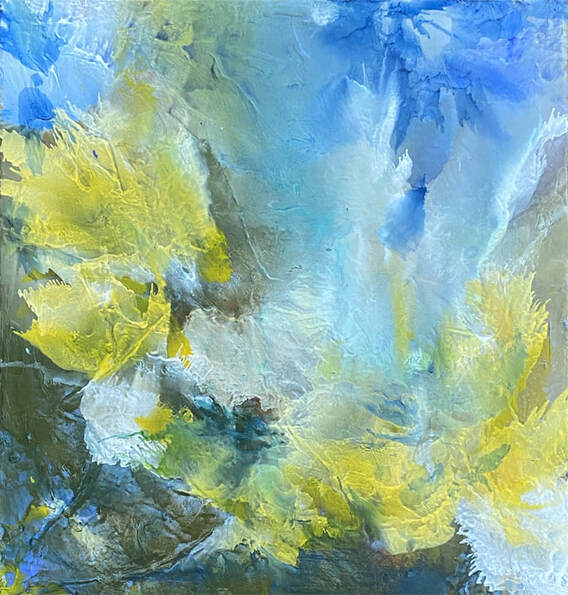
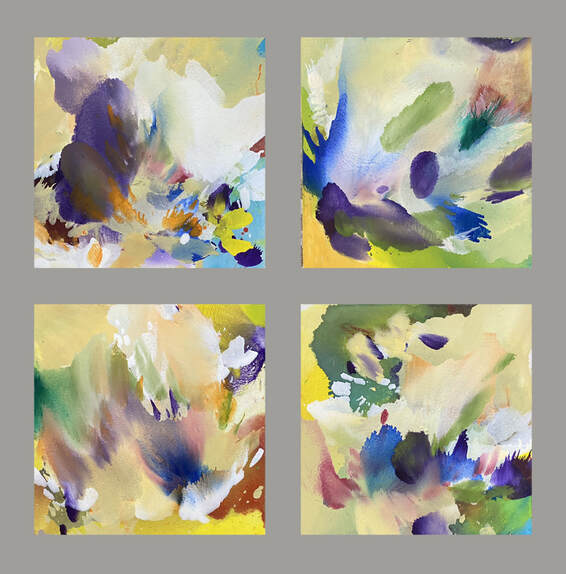
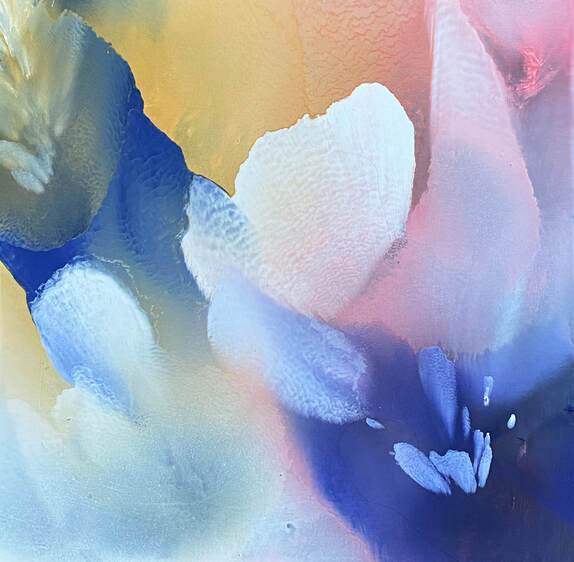
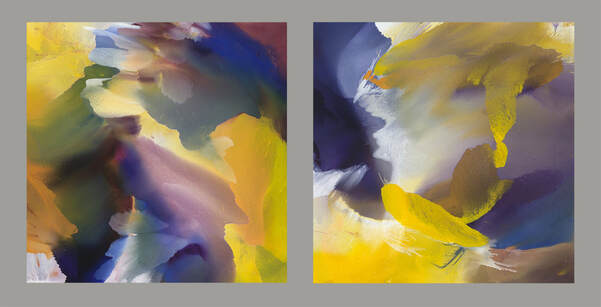
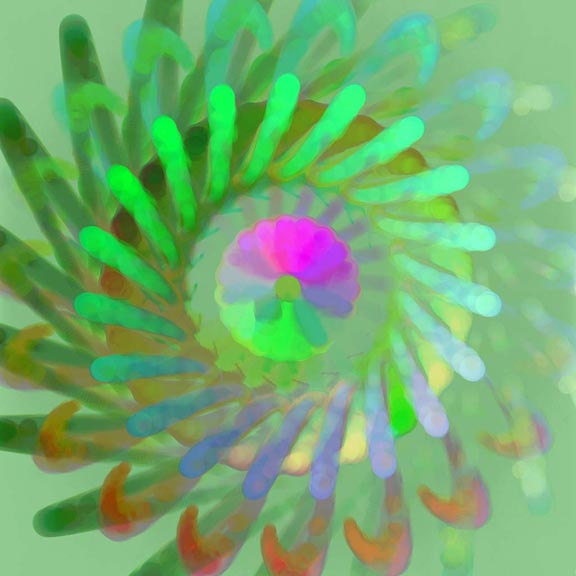
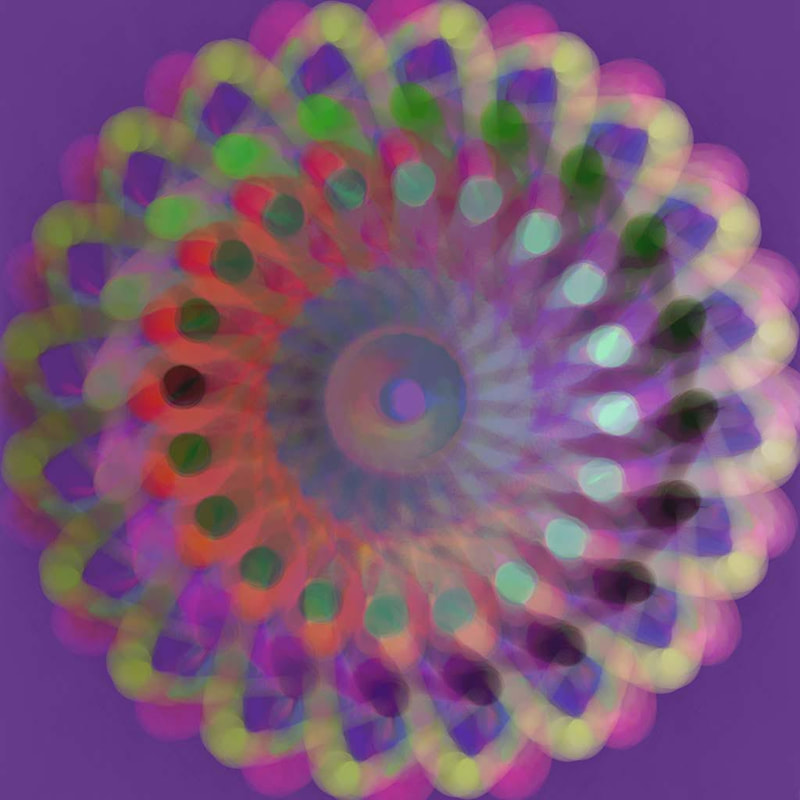
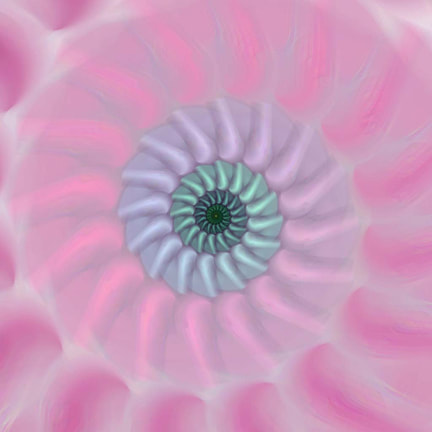
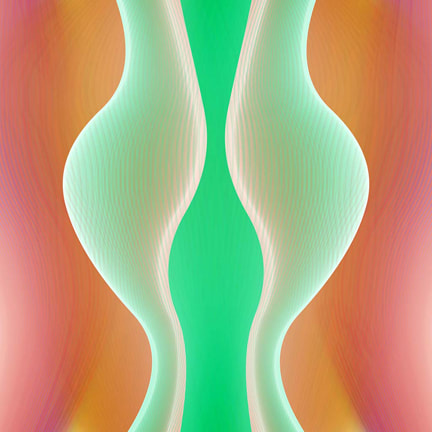
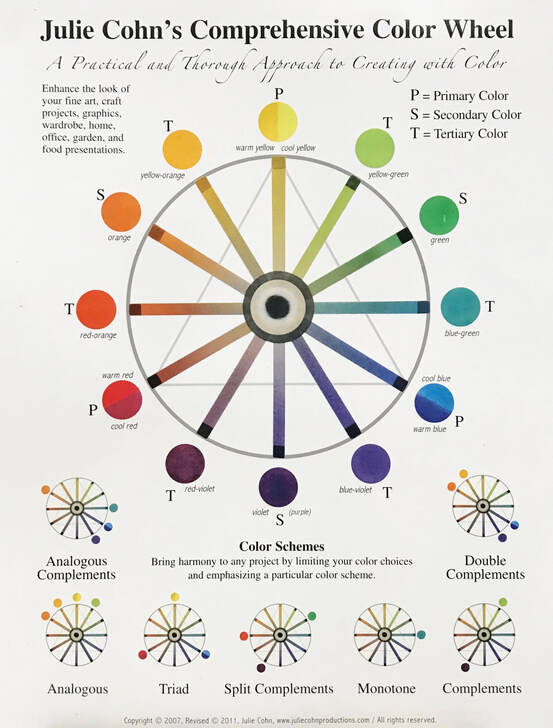
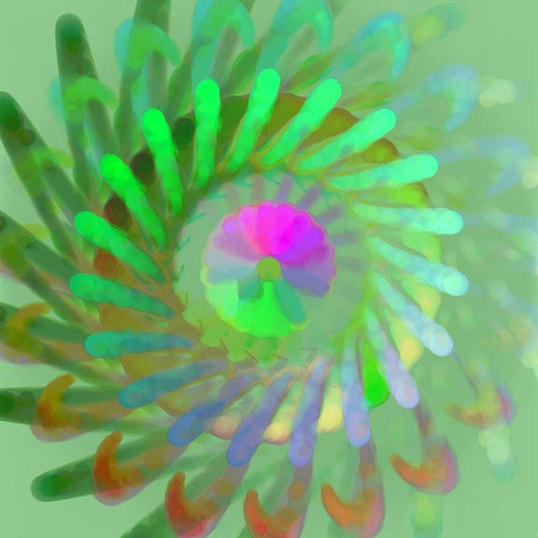
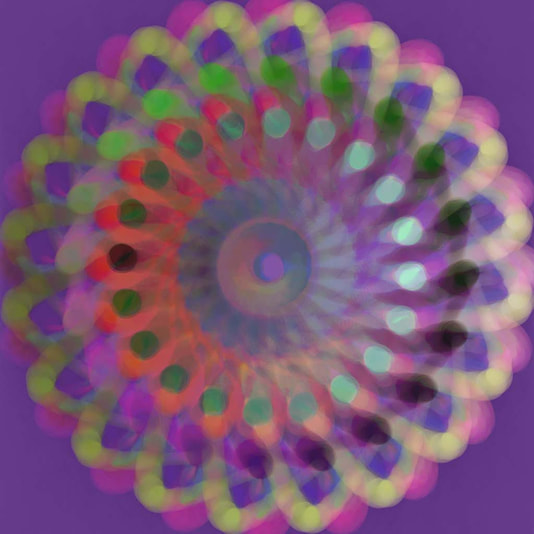
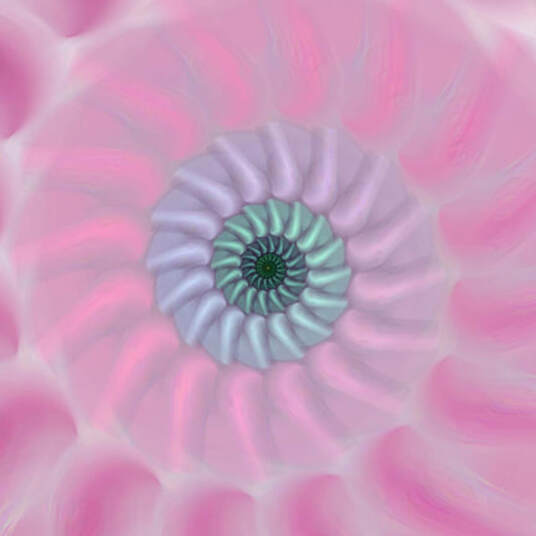
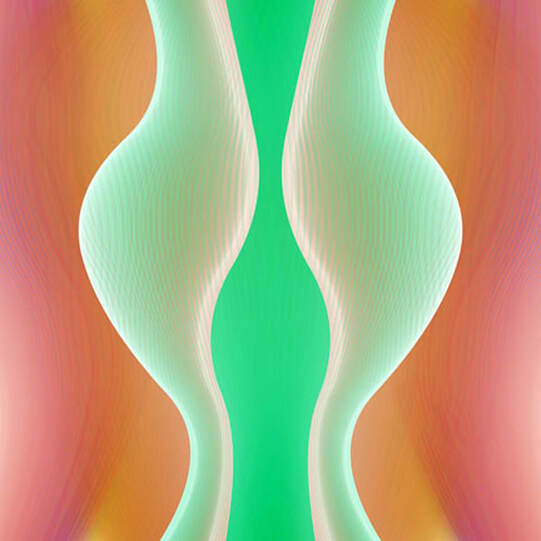

 RSS Feed
RSS Feed